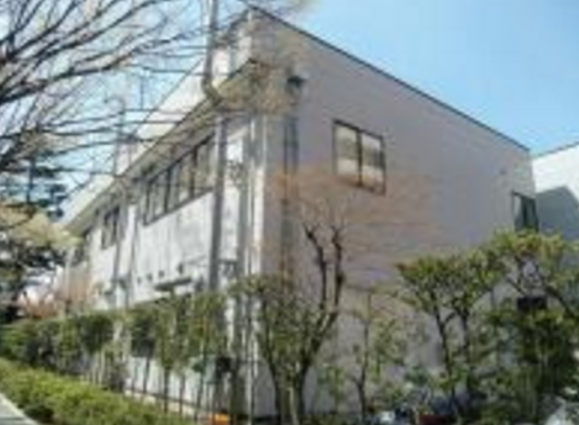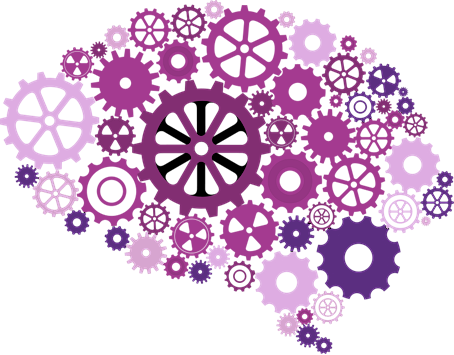
-
The Center for Smart-Aging Research

This six-floor building constructed in 2011 is home to many collaborative research programs. The 2nd floor houses the Professor’s room, administrative office, office for researchers and several seminar rooms. Each member is provided with one desk and two or more PCs. The research environment is so well-organized that brain function analyses can be individually implemented.

Brain Dynamics Research Building

Established in 2007, this building is home to the 7-T MRI system. Small animal test subjects are housed on the ground floor. By using this system, pharmacological/pathological experiments that cannot be conducted for humans are carried out. In addition, the NIRS equipment is to measure brain activities during body exercising and so forth is located on the 2nd floor.

Brain Imaging Research Building

This is the main research building for conducting MRI/MEG experiments for humans and was established in 2008. MRI and MEG system are located on the ground floor where each researcher can perform experiments based on their needs. There is also a waiting room for experiment participants on the 2nd floor in addition for psychological/behavioral experiments.
-
Spring – Summer

The first event in the lab is the welcome party for newcomers. Since members usually talk with colleagues who have similar research topics, this event is agood opportunity to talk with the members who conduct different topics. During spring, sometimes we hold a cherry-blossom viewing party on the second floor.

Autumn

In the autumn, Imoni party (traditional and typical outdoor activity in Miyagi and Yamagata area) is held at outdoor, along with the river. Members enjoy both Sendai-style and Yamagata-style Imoni. At this event members fortunately taste dishes cooked by Prof. Kawashima. By sharing works and dishes, members are able to have good communication each other.

Winter

In December, year end party and closing office event are held. Especially, year end party is one of the biggest event in the lab since every member comes up to this party. At the party, members enjoy games such as bingo and pleased with the rich premiums. After the new-year comes, new-year’s party and farewell party for members who leave the lab are held.
-
IDAC Access Map
Around IDAC

The Seiryo Campus, which includes IDAC as well as the University Hospital, the School of Medicine, and the School of Dentistry, is located on a flat area close to the city center. Downtown is easily accessible by all forms of public transportation as well.

Natural Environment

On campus, cherry trees are planted around almost every corner, which makes cherry blossoms viewing in spring a delight. In addition, the Nishi Park (renowned for cherry blossoms) and the Hirose River (famous for ‘taro stew’ parties) are within a walks distance from the institute. You can thus enjoy the sights and sounds of nature even if you are in the center of the city.

Food and Beverage

The School of Medicine and the School of Dentistry’s cafeterias are open to all IDAC members in addition to the many shops inside the University hospital. There are also many convenient stores, supermarkets, and restaurants around IDAC. The downtown area is accessible by public transportation or a 15 minutes walk from the institute. The most popular popular entertainment area is ‘Kokubuncho’, which of consists several blocks of pubs and restaurants.

Residential Environment

Around the Seiryo Campus, you can easily find apartments (single or family housing). Many foreign students live in the International House located in Sanjo-machi and the Tohoku University House Sanjo. New students are allowed to live in the University House Sanjo for one year with a monthly rent of about 10,000 yen. The University housing option is a greta way for many newcomers to make friends and to get accustomed to life in Sendai.

Transportation

CARS A car is a necessity in local cities like Sendai, especially when visiting the surrounding suburbs and out of city excursions.
BUSES & SUBWAYS If you use the city bus, the nearest bus stop is Daigaku-Byoin-Mae or Karei-Igaku-Kenkyujo. If you use the city subway, the nearest station is Kita-Yonbancho Station, which is a 10 minutes walk from IDAC.
BICYCLE A bicycle is useful for commuting around Sendai as most of the city lies on flat ground. Many of Sendai’s tourist attractions can also be accessed via bicycle, for example the Miyagi Kleenex Stadium to watch a football or baseball game. If you have the time and energy, you can also plan a bicycle trip to Matsushima.
The use of the IDAC parking lot is strictly restricted to faculty members and administration personnel of the Institute.
-
SENDAI CITY INFORMATION
TRANSPORTATION
ACCOMODATION & MORE
TOURIST INFORMATION
SENDAI CITY OFFICIAL HOMEPAGE
Sendai City, Miyagi Prefecture

Tohoku University is located in the heart of Sendai City, Miyagi Prefecture. The city was established a castle town by Masamune Date; it is now a major metropolis in the Tohoku Region. The city has the largest population in the Tohoku Region, with daytime population of about 1.15 million and a ‘de jure’ population of about 1.03 million. Aoba Castle (only the ruins remain now, was built by Masamune Date, and is a famous sightseeing spot. Moreover, Sendai is blessed with abundant nature and greenery such as the Hirose River and Mt. Aoba, together with many roadside trees. For these reasons, Sendai city is also called the “city of trees”. Sendai provides opportunities to enjoy each one of the four seasons: cherry blossoms in spring, the Star Festival and Fireworks Show along the Hirose River in August, saury and oyster festivals held by port towns such as Onagawa and Kesennuma in autumn, and skiing and snowboarding at Mt. Zao and Mt. Izumigatake during the winter months. Sendai is allso a great city for sports fans and spectators can enjoy watching sports games all year round. The three most popular teams are: the Rakuten Eagles (professional baseball team), Vegalta Sendai (member of the J. League), and the Sendai 89ERS (basketball league).
-
The Organization for Human Brain Mapping (OHBM)

The cognitive science research team and the language science research team mainly present their research findings at the OHBM. This is an international academic society that attracts researchers involved in noninvasive brain function measurement of humans. Many researchers in the lab attend this meeting every year. Students learning basic medicine in the School of Medicine are also given an opportunity to present their research findings.

Society for Neuroscience (SfN)

At SfN, mainly the brain dynamics research team and the cognitive science research team present research findings. SfN is one of the largest neuroscience meetings held in North America. SfN provides a great opportunity for neuroscientists that are involved in leading-edge researches.

Cognitive Science Society (CSS)

CSS is one of the largest academic meetings for all fields of cognitive science. The meeting provides several in-depth sessions that are divided into topics such as: memory, learning, motor, attention and language. This platform allows researchers to know mmore about other fields of study.

Japan Neuroscience Society (JNS)

All research teams present their research findings at JNS. This is an academic society that brings together neuroscientists engaged in brain and neuro-related basic, clinical, and applied research. Researchers attending the meeting specialize in a broad range of fields such as molecular biology, cellular biology, biophysics, anatomy, physiology, biochemistry, pharmacology, psychology, behavioral sciences, engineering, mathematics, and clinical medicine.

Japanese Psychological Association (JPA)

Many of the lab members are part of JPA, whouse purpose is to contribute to academic activities in Japan through the development and advancement of psychology, presentation of theoretical and practical applications of psychological studies, and intellectual exchanges and cooperation between related associations.

Association for Natural Language Processing (NLP)

Mainly the language science research team present their research finding at NLP. Basically, the NLP has engineering aspects of subjects such as natural language processing, but every year, presentations and discussions deal with different aspects related to language including theoretical and psychological matters. The meeting can be a forum for significant exchange of opinions to encourage interdisciplinary research.
